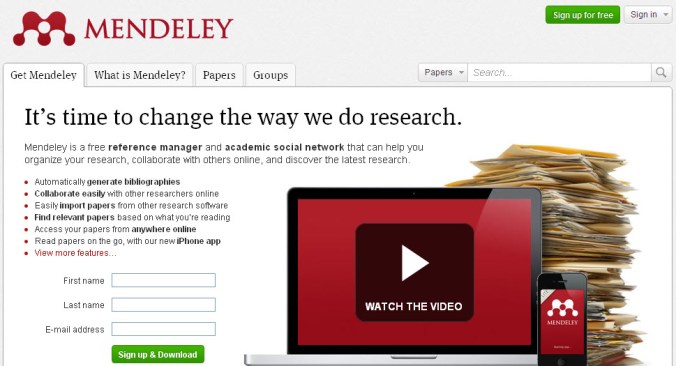Some argue that as technology advances it turns into a barrier and prevents essential human interactions, such as at the bedside. Even though this is a concern that we need to address, the Medicine 2.0 Summit 2011 provided a lot of examples that showed how technology can turn into a powerful mediator.
For those interested who did not get the chance to attend the event, here is a list of the main topics and initiatives presented that use social media, mobile computing applications, as well as Web 2.0 in healthcare and medicine to create new ways for people to connect. Please feel free to add your impressions and ideas of the summit and conference. Thanks!
1. If you are interested in learning from ePatients on how to build and leverage communities of practice and participatory medicine, you might want to explore the following blogs and platforms: 
- Amy Tenderich’s blog Diabetesmine.com,
- SmartMobs, authored by Howard Reingold, who was diagnosed with colon cancer and shared his experience on a blog called Howard’s Butt
- PatientsLikeMe, where more than 115,000 members with over 1,000 conditions share their experiences to see what interventions are working for others
2. Patients have been connecting for some time. However, how can we help connect physicians and patients in a meaningful way? During the session “The Healthcare Transformers”, the panelists presented their views on personalizing healthcare and new ways for physicians and patients to communicate. 
- Jay Parkinson, founder of HelloHealth and Futurewell, shared his passion about using creative design to improve health — and a few critical lessons learned (including” innovation is lonely” and “colleagues are critics”) as he and colleagues opened a “virtual clinic”, a “web-based patient communication, practice management and electronic health record in one solution”.
- Lee Aase from the Mayo Clinic Center for Social Media gave a very entertaining talk on social media in the spirit of “Suus non ut Difficile” (It’s not that hard). See one of their latest success stories: “When Patients Band Together – Using Social Networks To Spur Research for Rare Diseases”. They are very proactive about arming their health care professionals with the right tools to leverage social media for their successful communication. They even started a “Social Media Residency”. Aase also introduced the Social Media University, Global (SMUG), a post-secondary educational institution dedicated to providing practical, hands-on training in social media to lifelong learners.
- Bryan Vartabedian, pediatric gastroenterologist, writes an interesting blog 33charts about “the convergence of social media and medicine”.
- Wendy Sue Swanson, practicing pediatrician, mother, and author of SeattleMamaDoc, walks a fine line and shares resources and methods that she learns from her patients, friends and family, both in and out of the field of medicine. She applies the concept of storytelling to achieve her goal of helping parents decipher some of the current medical news.
- Ron Gutman, founder and CEO of HealthTap , who we wrote about in our earlier post, presented his solution to ending health care communication in silos. Some of the latest updates include 1) peer review features which will help give great questions more weight in the HealthTap environment, 2) offering a mobile solution, and 3) allowing participating doctors to be notified of questions coming from local patients.
3. “The Knowledge Revolution”: If you are interested in using innovations in Medical Education, you might find the following projects of interest:
- Bertalan Mesko from Webicina.com provides curated medical social media resources in over 80 medical topics in over 17 languages to help patients and medical professionals access the most relevant social media content in their own languages on a customizable, easy-to-use platform for free.
- Parvati Dev from Clinispace presented their virtual, 3D virtual training environment for healthcare professionals where learners can practice on realistic virtual medical scenarios and recover safely from errors.
4. The panel on “The Interconnected Life” discussed social tools and platforms such as Epocrates, Google Correlate, which finds search patterns which correspond with real-world trends, and Quora.
5. During the panel “The New Scientist”, Michael Conlon presented VIVO , an “open source semantic web application”, a tool that is – like Profiles, Loci and others – used or being implemented by universities across the nation to enable and support scientific collaborations and expertise discovery. 
- Jan Reichelt, Co-Founder and President at Mendeley, talked about how the tool, a free reference manager and academic social network, helps investigators organize their research, collaborate with others online, and discover the latest research.
- Peter Bienfield from PlosOne reminded us that most of the 1.5 Million papers published every year are still “closed access”. However, as established publishers experiment with “open access”, e.g., Sage Open , BMJ Open , Biology Open ,and Scientific Reports , they validate the model…
- And, David Pescovitz explained how he is looking for “signals” to identify far-out ideas. He is editor for Boing Boing and MAKE as well as research director with the Institute for the Future.
6. Dennis Boyle, IDEO Founding Member and Partner, gave an interesting closing keynote on “design thinking” and “a human-centered approach to innovation.” He highlighted some of their recent projects… worth exploring….
More information:










